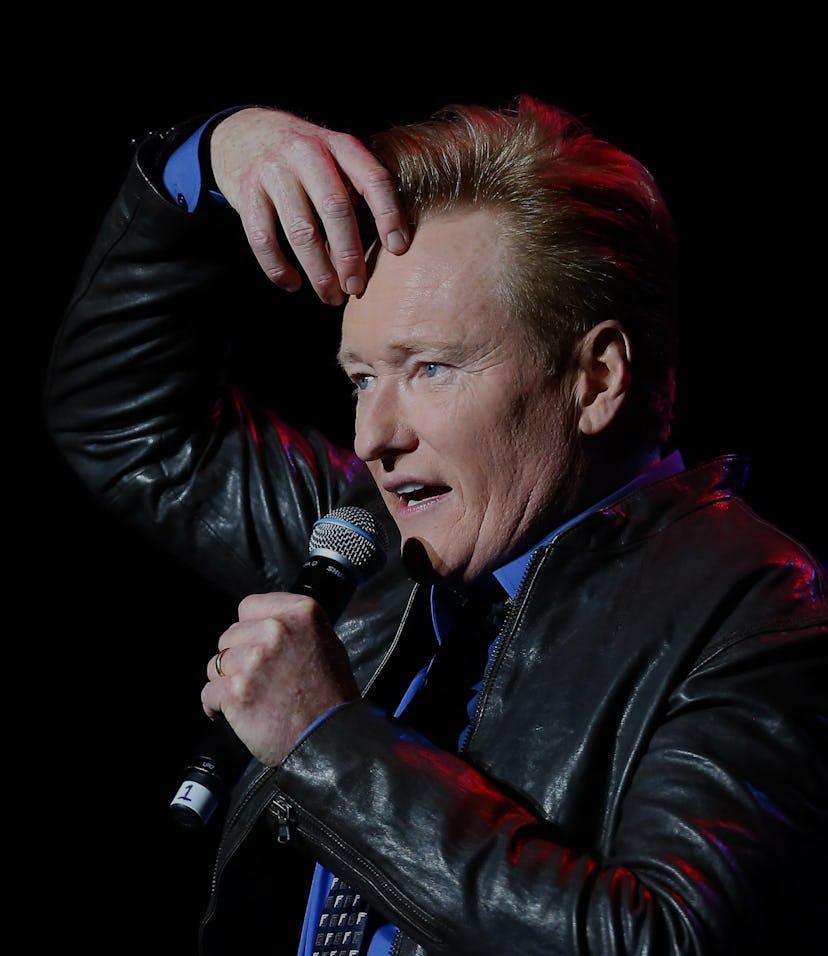Tech
Comedians like Conan and Jimmy Fallon are replacing their camera crews with homemade iPhone videos
In these quarantined times, you don’t need a camera crew, live audience or in-studio guests. All you really need is an iPhone, Wi-Fi, and YouTube.

As the world is urged to stay home (seriously, don't be an idiot, and stay home) and engage in social distancing to slow the spread of COVID-19, video creators both amateur and established, who can no longer shoot in a studio with a camera crew, are quickly realizing their smartphones — specifically, the iPhone — are more than adequate replacements for big, fancy, and expensive cameras.
Case in point: Comedian Conan O'Brien's late-night show will be "shot remotely on an iPhone" according to Variety.
"All my staff will work from home, I will shoot at home using an iPhone, and my guests will Skype," the late-night host said on Twitter. "This will not be pretty, but feel free to laugh at our attempt."
The casual and seamless transition from multi-person crew to single-operated iPhone recording underscores how drastic content production and consumption has changed in the last 15 years. YouTube is the new TV. The old rules of studio video production are weakening every day.
O'Brien is not the first comedian to shoot videos with his iPhone. The Tonight Show's Jimmy Fallon (with special help from his wife as camera operator) has been shooting videos with his iPhone as well. Most recently, Fallon shared a video of himself quarantined at home and video chatting with Hamilton genius Lin-Manuel Miranda.
Fallon's video hardly qualifies as crispy or high-quality, but it ultimately doesn't matter because content, and not the camera or gear it's created with, is king. Comedians like O'Brien and Fallon have massive audiences who turn to them for entertainment because they're funny, not because their camera producers shoot with a RED or in 4K.
For independent content creators like YouTubers, it's a sober reminder that you don't need to run out and buy the latest or most expensive camera equipment. So long as your smartphone has an autofocus system that works (read: not Galaxy S20 Ultra), you should be more than good to go. Just tell a great story.
Why the iPhone is the best for video —While any recent Android smartphone is capable of shooting decent video, none compare to the iPhone. It's just in a class of its own with the best autofocus and electronic stabilization. The latest iPhone 11 and 11 Pro can shoot 4K at 60 fps on all cameras (that's front and back) and apps like Filmic Pro's DoubleTake even let you record videos from the front and back cameras simultaneously.
I'm not affiliated in any way, but Nizo is arguably one of my favorite camera apps on iOS because it combines both shooting and editing into a single interface. I shot and edited the below parody video with Nizo with minimal effort. (Go easy on the video quality – Twitter is trash when it comes to video compression and I promise finished videos don't look so low-res.)
Beyond having better video stabilization, iPhones also have the performance to process videos up to 4K resolution quickly. People are so quick to scoff at the sheer unnecessary performance Apple packs into its custom A-series chips when apps like YouTube or Gmail or Instagram will never need it. But anyone who shoots a lot of video with an iPhone will understand how valuable every drop of CPU and GPU performance is.
For shooting and editing video, the iPhone outclasses any flagship Android phone. Period.
#ShotOniPhone crew growing — Look, the iPhone will never kill professional cameras. There will always be a niche for them just like there is room for a big ol' Mac Pro desktop in the age of the iPad Pro. But Apple's smartphone is becoming quite the rockstar camera with more productions choosing to shoot with it for a) bragging rights and b) flexing their creativity. (Apple has been flexing hard with its own #ShotOniPhone mini-films like this one for Chinese New Year that creatively strapped an iPhone to a car wheel to get a shot of it spinning around.)
Lady Gaga won hearts recently for her slappin' "Stupid Love" music video which was shot with an iPhone. Ditto for Selena Gomez's "Lose You To Love Me" music vid.
Director Steven Soderbergh has shot several movies entirely with iPhone; High Flying Birdwas shot with an iPhone 8 and Unsane starring Claire Foy with an iPhone 7 Plus.
And just to humblebrag for a second, I shot all of the videos in my Boosted Beams review with an iPhone 11 Pro. Input friend and video producer Zach Goldstein also shot the videos for some of my favorite CES videos, like the Segway S-Pod and Sublue Mix Blue underwater scooter, entirely with iPhone 11 Pro, too.
YouTube takes all — Video quality matters a lot for professional studio-produced videos. You need proper lighting equipment, multiple cameras, coordinators, food services — a ton of stuff. But if there's one thing the coronavirus is teaching everyone, it's that YouTube is the only thing that matters.
It's the place where people see a finished video and viewers don't care if the content was shot with an iPhone or a $100,000 studio camera. Viewers are more forgiving if a comic like Fallon isn't wearing makeup or shooting from inside their home. These things simply don't matter when most people are watching content on their phones at less-than-full-resolution.